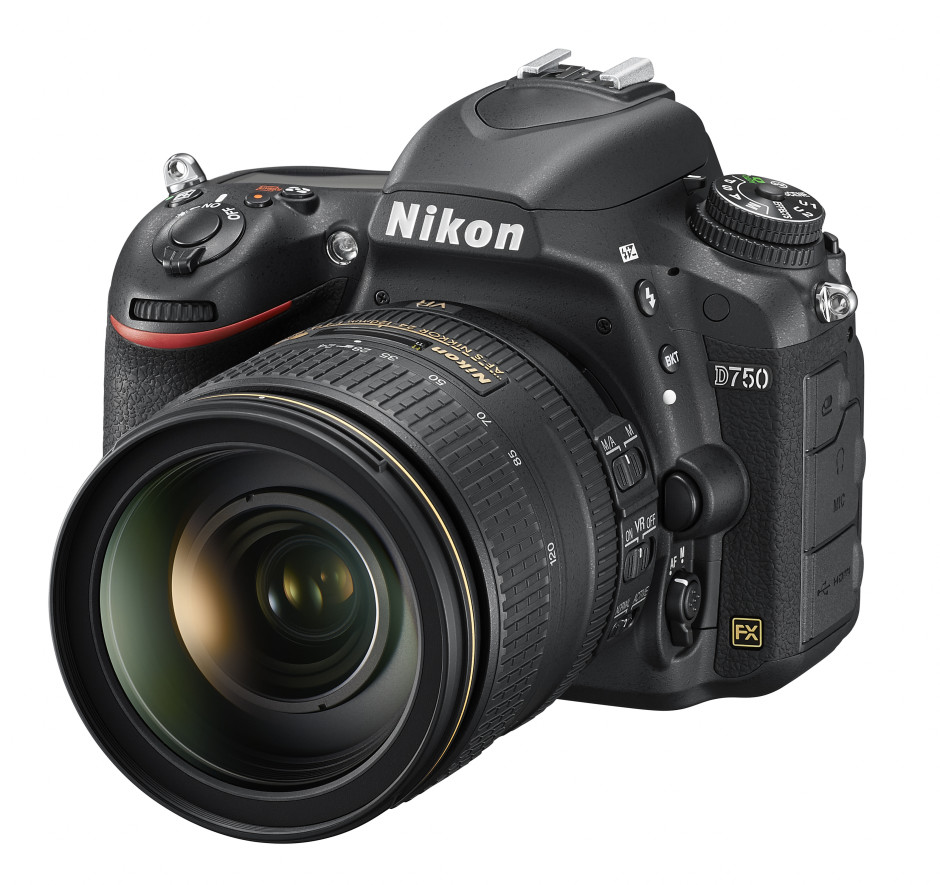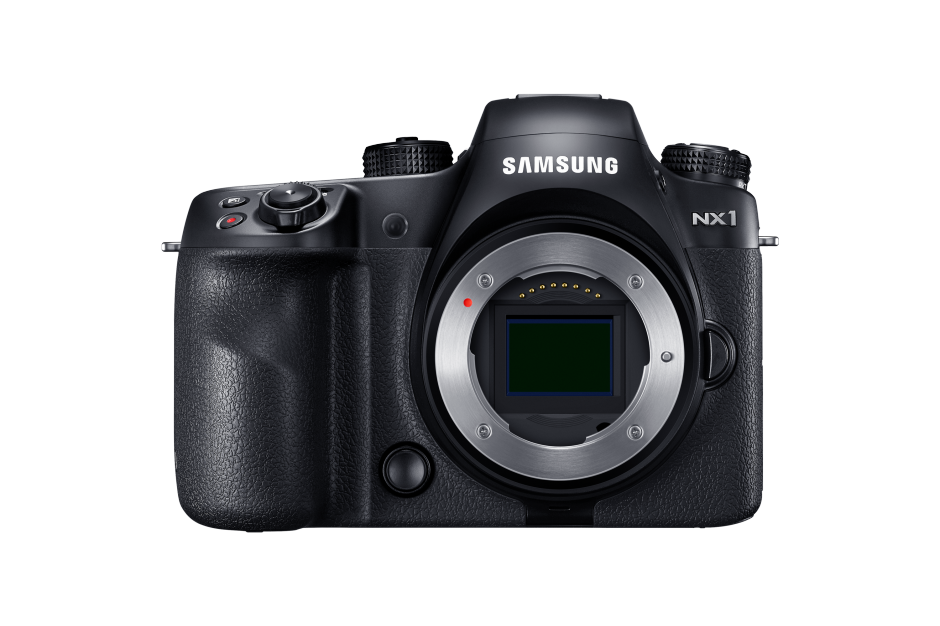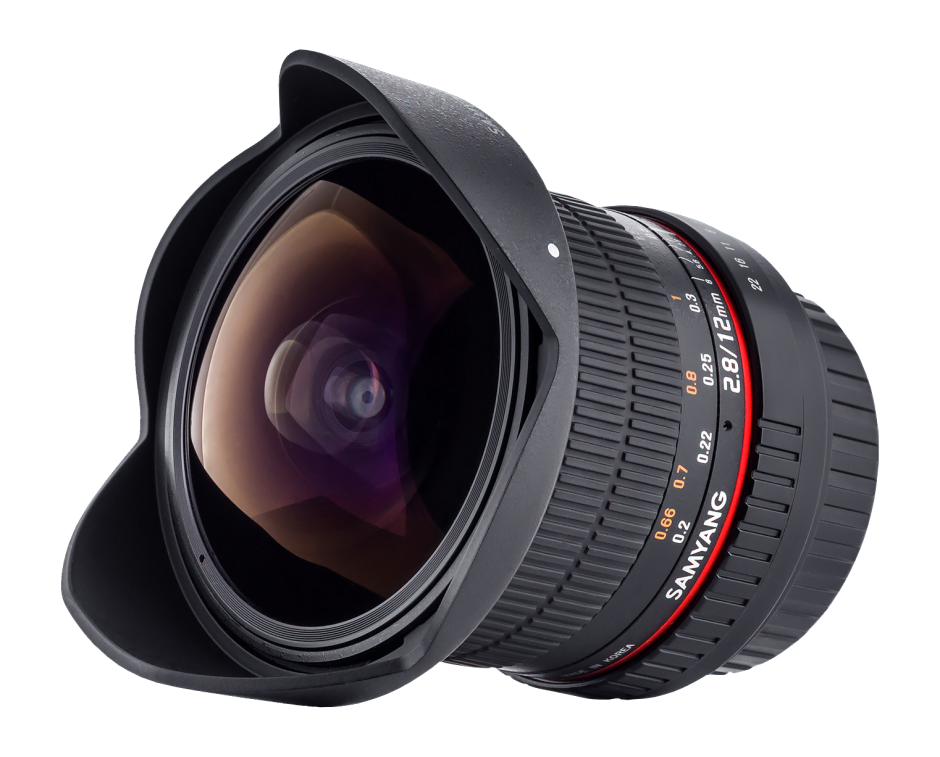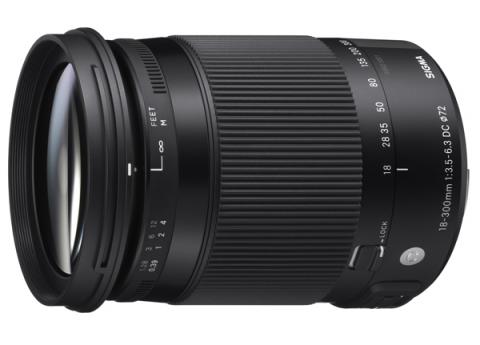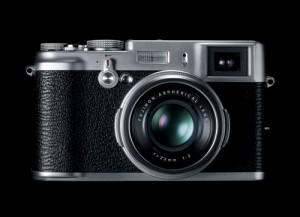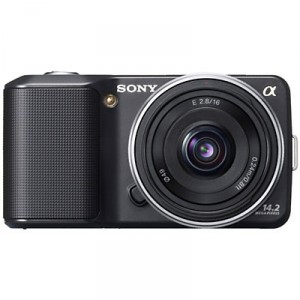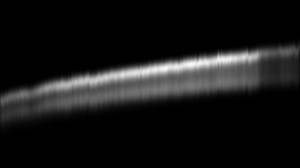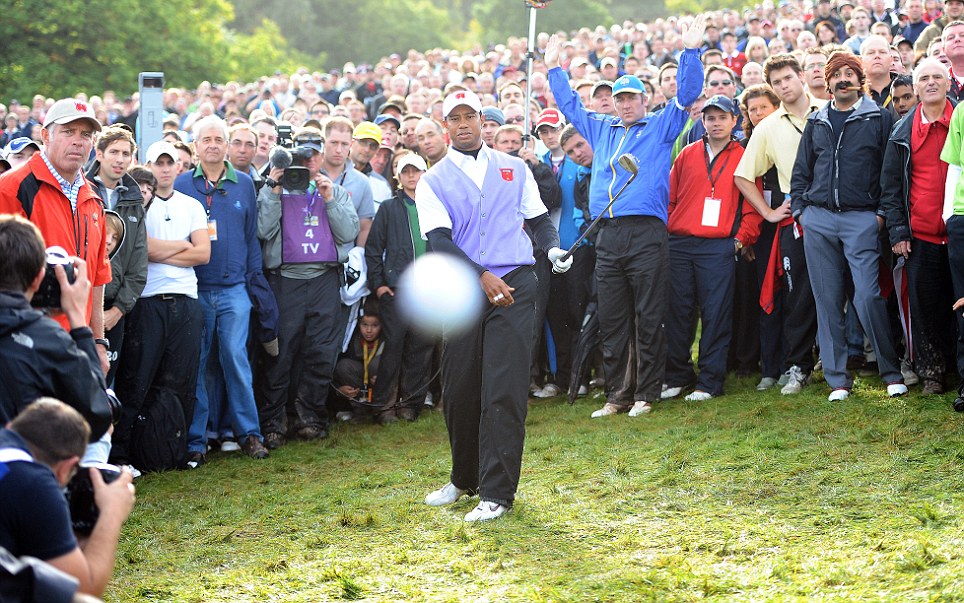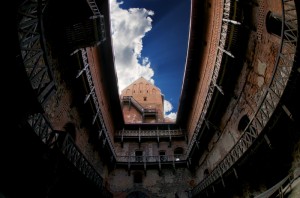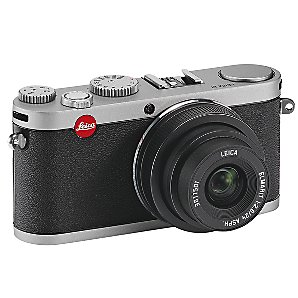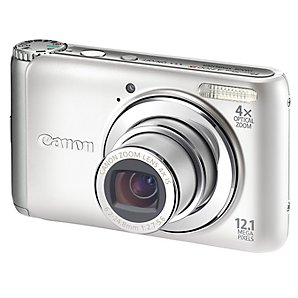The Consumer Electronics Show in Las Vegas is one of the biggest platforms in the world for announcing new photography kit. So what went down in 2015?
The great Photokina 2014 round-up
Keeping track of everything new that's announced at Photokina can feel like something of a labour of Sisyphus. So rather than cover every new product with an individual article and drive everyone to distraction, we've opted to summarise as many as we can in one place. This is Photokina 2014. Enjoy!
Canon
After what amounts to years of speculation, Canon has finally announced the EOS 7D mark II. The basic spec: APS-C, 20 megapixel sensor; ISO 100 to 16,000 but expandable to 51,200; dual DIGIC 6 processors; 65-point auto-focus; top shooting speed of 10 frames-per-second; and built-in GPS. All for $1,800, body-only.
Three new lenses have joined the line-up, too: an EF-S 24mm ƒ/2.8 STM for $149.00; an EF 24-105mm ƒ/4.0L IS STM for $599; and the EF 400mm ƒ/4.0L DO-IS II (USM) at $6,899.
There are also three new compact cameras. The premium G7X with its 1", 20 megapixel sensor and DIGIC 6 processor; top sensitivity of ISO 12,800; and a 24 to 100mm lens with a maximum aperture of ƒ/1.8 at its widest and ƒ/2.8 at the telephoto end, for $700. The SX60 superzoom with its 65× optical zoom for $550. And the N2, which, like the Powershot N, leaves me baffled.
Fujifilm
Fujifilm announced an update to its much-loved X100-series; the X100T. This one comes with an improved hybrid viewfinder, enhanced controls, and faster shuttre speeds. All for $1,300, in either black or silver.
The X20 has been upgraded to the X30. The improvements to Fuji's point-and-shoot focus on a new viewfinder and a tilting 3" high-res LCD. You can order one for £600.
There were also two new lenses: the X-F 56mm ƒ/1.2 R APD (85mm quivalent in 35mm format) for $1,500. (APD is apodisation. It is designed to give even smoother bokeh than the normal XF56. Great for portrait work.) And the weather resistant 50-140mm ƒ/2.8 R LM OIS WR at £1,600.
And don't forget the graphite-look X-T1 for $1,500 body-only.
Joby
Roll-up, roll-up, get your suction cups from Joby! Adding to its range of twisty, bendy, go-anywhere camera support devices, Joby has unveiled two suction cups, designed to provide industrial-strength hold on all types of smooth, clean, and non-porous surfaces. One has a locking arm, that's best for use in vibration-prone situations, such as in cars or on board boats (£33). The other has a Gorilla-pod arm, a quick-twist, flexible option that's better for windows, walls, and inside cars (£25).
[gallery columns="2" ids="6976,6975"]
There's also the Pro Sling Strap, designed for dSLRs, to keep your camera close to your body but easy to pull up to your eye (£57); the GorillaPod Focus + Ballhead X is the strongest and largest GorillaPod to date (£140); and the Flash Clamp and Locking Arm, which helps to transform everyday objects into lighting assistants with the two articulating ball joints that let you position your flash at any angle (£35).
[gallery ids="6979,6978,6977"]
Leica
Leica announced a laundry list of new cameras at Photokina:
- Leica M 60 Edition - an LCD-less camera, limited to 600 units, and costing $18,500 with a 35 Summilux stainless steel lens
- M-A
- X - Type 113; and X-E
- S - Type 007; and S-E
- V-Lux - Type 114
- D-Lux - Type 109, basically a Panasonic LX100
And a goodly selection of lenses, too. Leica enthusiasts couldn't have known which way to look first!
Nikon
Nikon's big announcement was the D750: an FX-format camera with 24 megapixel sensor and EXPEED 4 processor, 51-point autofocus system, sensitivity ranging from ISO 100 to 12,800, a tilting LCD, built-in wi-fi, all crammed into a smaller-than-expected body. For $2,300, body-only.
There was also the new Nikkor AF-S 20mm ƒ/1.8G ED and the SB-500 Speedlight.
Olympus
[gallery ids="6969,6968,6967"]
As well as announcing the E-PL7, Olympus brought out its E-M1 in silver (body-only for $1,400) and a new 40-150mm ƒ/2.8 lens for $1,500.
Panasonic
Panasonic came up with two new cameras and a new lens, together with the re-branded Leica cameras under the V-Lux and D-Lux badges.
[gallery ids="6966,6965,6964"]
The new LX100 camera is available for $900. It has a Micro Four Thirds sensor, a 4-75mm Leica DC lens (ƒ/1.7-2.8), and comes with an external flash. The GM5 mirror-less camera comes in black or red, with a 12-32mm lens, for $900.
And there's also the Panasonic G Vario 35-100mm ƒ/4.0-5.6 ASPH lens for G-series cameras, costing about $400.
Samsung
Samsung let loose a new camera, lens, grip, battery, and charger on the public in Köln. The camera is the 4K-video-enabled 28 megapixel NX1 for $1,500 body-only and the lens the 50-150mm S.
Samyang
As well as the 50 mm T1.5 AS UMC cine lens, Samyang also announced its 12 mm ƒ/2.8 ED AS NCS fish-eye lens, which has been designed for full-frame cameras. We don't have a price or release date yet for it, but I am looking forward to seeing it.
Sigma
Sigma announced its dp1 Quattro camera, with a Foveon direct image sensor that is similar to traditional colour film in that its multiple layers capture all of the information that visible light transmits. It also announced two different versions of the same lens: the 150-600mm F/5-6.3 DG OS HSM Sports and the 150-600mm F/5-6.3 DG OS HSM Contemporary. The sports version is, probably quite obviously aimed at sports and wildlife photographers. The contemporary label is more compact and portable.
There was also the 18-300mm F/3.5-6.3 DC Macro OS HSM Contemporary lens.
Sony
Just before Photokina, Sony announced two new lens units, to attach to smartphones. These were the QX1 and QX30. During Photokina, a slew of camcorders, video cameras, and accessories were unveiled, too. The things that caught my eye was the flash unit, the HVL-F32M for $300.
The Nikon Df has people talking. That's a good thing.
Sitting back and watching the comments unfold about Nikon's Df camera has made for a mildly entertaining distraction today. For anyone who's missed out on the announcement or the teaser videos released in the run-up to its unveiling, this is it:
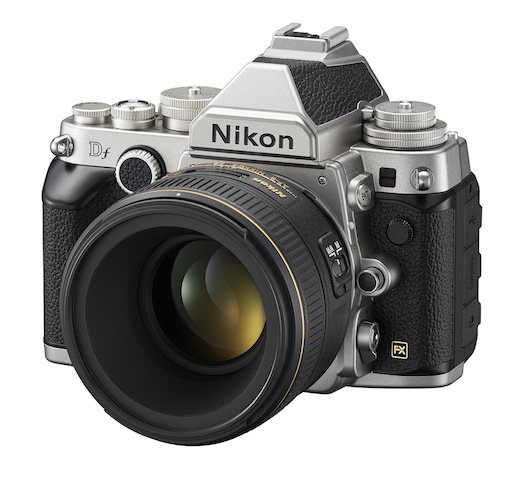
The Nikon Df has a 16 megapixel full-frame sensor powered by an EXPEED 3 processor, giving it the same guts as the Nikon D4. Sensitivity ranges from ISO 100 to 12,800, and is extendable to 204,800. It has a maximum continuous shooting speed of 5.5 frames-per-second, 39 point auto-focusing system, and pre-AI lens compatibility but no capability to match its retro-looks. It (and a 50mm ƒ/1.8G) also comes with a £2,750 ($3,000) price tag.
Mostly, the comments have ranged from 'Oh my good freaking deity of choice and all commensurate attendees, I have to own this camera right now and will sell a kidney to fund it!' to 'What a stinkingly ugly camera! Anyone prepared to pay that much for something that looks as if it has been welded together for spare parts must have more money than sense!' They do, however, go via: 'It had me until I saw the price,' and 'No video? It's not for me.' Even the more tempered comments are laced with a sense of disappointment or disbelief.
It's a camera that has divided opinions and caused people to talk. Lee Morris, over on FStoppers, has described it as a camera that exemplifies everything that is wrong with photography right now. That's not to say that the camera itself is terrible and awful, but that the current retro-obsession has maybe gone too far and that cameras have become fashion accessories rather than tools. Jaron Schneider, another FStoppers contributor, takes a different tack. He calls it a camera 'to remind you why you are a photographer.' There's very little by the way of ambivalence, and that is a good thing.
Why do I think that? I think that Nikon's produced a concept camera. It's expensive. It costs less than the D4, but it's still an almost-£3,000 camera. It has particular appeal with its capabilities and ergonomics. Many people will appreciate the dials and its old-school-lens-love, but it doesn't shoot video. For some people video's an irrelevance, for others it's a deal-breaker. I also happen to think it's ugly. That, however, is a matter of personal aesthetic preference. And to be truthful, I think I'm done with the retro-thing (although I will admit that I think Fujifilm has its styling right in this respect). I'm also entirely sick of the onanism that's taking place over it. That, though, is probably the point.
It's not meant to be a camera for anyone and everyone, it's meant to be a camera that gets people talking and it has certainly accomplished that.
Nikon's created a camera because it can. Not because it's ground-breaking or the market is baying for it, but because it has the creative latitude to do so. There are at least three reasons why I've absolutely no desire to own a Df, but if it's the kind of camera that reminds people why they love photography, then more power to Nikon.
Nikon's Photo Contest 2012-2013 winners
In a year with a record number of entries—99,339, from 153 different countries and territories—Nikon has announced the winners of its Photo Contest 2012-2013. Understandably, the competition was very definitely Nikon-oriented, with one of its four categories dedicated to the motion snapshot function found in Nikon 1 series cameras (that's the Harry Potter-esque feature that combines stills and video) and a special award for the best photo taken with a NIKKOR lens.
There were three other categories: single photo, photo story comprising a series of two to five images, and a photographic video up to 45 seconds in length.
The judges selected their grand prize winner from a total of 48 first, second, and third placed entries made from the photo, photo story, and photographic video cateogies and three winners from the motion snapshot category. They were looking for the photographer's ability to tell a universal story, diversity, the strength of their message, creativity, and the techniques used.
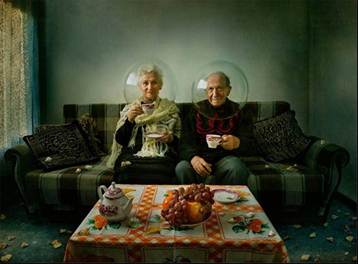
The Grand Prize was awarded to Dina Bova for her Elegy of Autumn. Chris Rainer, one of the judges, said of it: 'Our Judges loved this image. It tells so many stories. It is at once traditional and respecting of the elders set in a classic living room, yet whimsical with the reference to space travel. It points to our future while honoring our past.'
The winning images will be exhibited in Tokyo from August to September and Osaka between September and October this year.
TIPA 2013 - who won what
 Once a year the Technical Press Imaging Association, or TIPA, meets in a desirable location—this year it was Hong Kong, last year in was Cape Town—to settle on which manufacturers have produced the best easy-to-use compact cameras, most innovative tripods, and the swishest top-end dSLRs over the past 12 months.
Once a year the Technical Press Imaging Association, or TIPA, meets in a desirable location—this year it was Hong Kong, last year in was Cape Town—to settle on which manufacturers have produced the best easy-to-use compact cameras, most innovative tripods, and the swishest top-end dSLRs over the past 12 months.
There are in fact 40 different categories that are decided on by representatives from TIPA's 27 member magazines, as well as the Camera Journal Press Club of Japan.
Canon took most of the dSLR spoils, winning best entry-level with the 100D, best expert with the 6D, and best video dSLR with the 1D C; Nikon, however, won the advanced category with its D7100.
When it came to compact system cameras, or mirror-less cameras, or EVIL cameras, Fujifilm, Olympus, Panasonic, and Samsung all had a look-in. Fujifilm's X-E1 won the best expert CSC award; Olympus took the entry level CSC honours with the PEN E-PL5; the professional CSC prize went to Panasonic for its GH3; and finally the advanced prize was won by the Samsung Smart Camera NX300. If you can wade your through the difference between 'professional', 'advanced' and 'expert', then you're a better woman than I am.
The compact camera categories were split between Nikon and Panasonic. Nikon walked off with awards for its Coolpix S01 in the 'easy' class and its P520 superzoom. The rugged camera was Panasonic's prize, though, for the FT5 (or TS5, depending on where you are).
Canon, Fujinon, Nikon, Sigma, and Sony all won prizes for their lenses, ranging from 'best CSC prime' (the Fujinon XF 14mm ƒ/2.8 R) to 'best professional lens' (Canon's EF 24-70mm ƒ/2.8L II USM), via best entry-level dSLR lens (the Sigma 17-70mm ƒ/2.8-4 DC MACRO OS HSM).
As for best premium camera, that was the Sony RX1; best professional camera was the Leica M; and best imaging innovation was awarded to Samsung for its 45mm ƒ/1.8 (2D/3D) lens.
If you want to check out the rest of the winners, which includes best media storage, imaging monitor, and photo TV, you can see the whole list on TIPA's website.
I can't help but feel that with a carousel of categories where the differences in criteria aren't necessarily discernible, it's more a case of 'These were all really good products and we need to find some way of showing that.' I can't say that the awards will encourage me to buy a Nikon superzoom, but it must be gratifying for the manufacturers to receive a pat on the back.
Lensbaby lets Spark fly
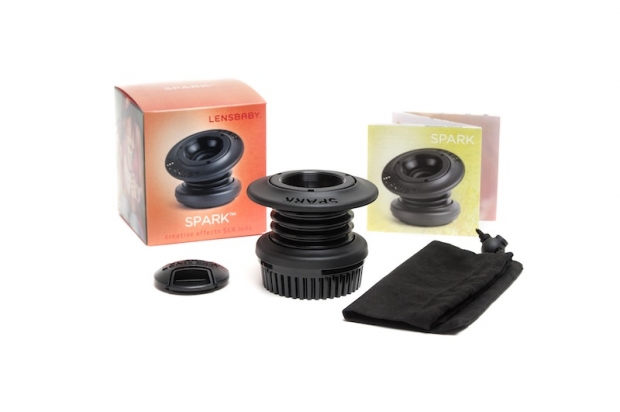
Lensbaby lenses are a whole heap of fun, and whilst they don't exactly break the bank, I can understand someone forgoing one in favour of putting the money towards a serious wide-angle or a shoulder-crunching telephoto. The latest addition to the Lensbaby lineup, however, might change that. It's the Spark. It's a 50mm selective focus lens with a fixed aperture of ƒ/5.6 and a retail price of $80, available for Canon and Nikon mounts.
It's dead simple to operate: you squeeze to focus and then tilt the lens to place your sweet spot and get the blur where you want it. Spontaneity and selective focus are go!
Lensbaby might feel that the Spark is 'designed to help young creative photographers express themselves,' (the words 'young' or 'youthful' are used three times in a three paragraph press release) but at $80 I reckon that it's ideal for anyone who'd like to play around with a tilt-shift lens. If you're on a budget, you're not going to find many lenses cheaper, let alone a tilt-shift; if you're toying with the idea of investing in a fully-fledged tilt-shift but aren't sure how much use you'd get out of it, what's to lose with a Spark?
Sure, you might regard the fixed aperture of ƒ/5.6 as a limitation, but really and truly, when you head out with a Lensbaby, you make the choice of which aperture you'll shoot with that day and be done with. It's no fun fiddling around with magnetic aperture rings in the street.
If you fancy one you can head over to the store on the Lensbaby website and purchase directly, Spark went on sale today. If you're not convinced that a Spark is for you, take a look at the gallery of images. They're pretty, regardless.
Nikon don't need no mirror-less camera
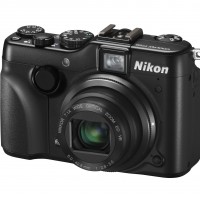
It didn’t happen last week. The hugely anticpated mirror-less camera from Nikon didn’t materialise amongst all of its other high-end compact, rugged, and more fun point-and-shoot cameras that were announced on Wednesday. There were some very disappointed people about; the rumours have been swirling for over a year, there have been patent leaks galore, there have been name suggestions, and there have been theories that it’ll resurrect the F-mount. So where is this evil creation that has everyone guessing?
Well, according to James Loader, Nikon’s Product Manager for Consumer Products, Nikon isn’t interested in the mirror-less market; he reckons that Nikon has its bases covered and Nikon customers really aren’t looking for a mirror-less camera. He told the guys from TechRadar: ‘When we were at Focus last year, it didn’t get asked for. It’s really only the press that constantly wants to know.’
For Nikon, the P7100 is the perfect camera for someone who isn’t quite ready to make the leap to a dSLR, or as the second shooter for a dSLR user. Why do they need to embroil themselves in the battle for the mirror-less ground, which is already churned up by Olympus, Panasonic, Sony, and Samsung? Far better to concentrate on the devil it knows.
It seems as if Nikon has identified its market and is sticking with it. If that changes, then they’ll think about altering their strategy accordingly: ‘We’re watching the market, the same as everyone else is, we’d be foolish to ignore what’s happening,’ said Loader.
So, no Nikon mirror-less. For now, anyway.
(Headsup to TechRadar)
My Focus on Imaging round-up
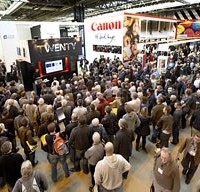
I spent a lot of time wandering around halls 9 and 10 of the NEC yesterday. A lot. Partly this was because there was plenty to see, but also because I managed to get myself well and truly disoriented on a couple of occasions. (My legs are doing okay this morning; thanks for asking.) But apart from my cartographical vagaries, what were highlights, and what are my tips for anyone planning on going between today and Wednesday?
Highlights
I admit it, the first place that I headed to (and this one couldn’t be missed because of its massive green and white banners) was the Fuji stand where they had some X100s for us to play and fiddle with. I say ‘some’ because the queues were quite extensive so it didn’t really feel enough. Did I love it as much as I thought I would? Well, I wasn’t sobbing that I’m not on the pre-order list. The hybrid viewfinder is great; I liked the aperture ring; but I couldn’t see myself using it.
Kudos to Pentax who had knowledgeable staff manning their stand, unlike at least one other big name (I’m looking at you, Nikon). They also had a couple of 645Ds out for public delectation, in addition to a bank of K-r and K-5s. I did really like the 645, but I doubt I’ll be taking the plunge with a medium format for quite some time.
To my surprise, Sony still had the NEX-3 on display. So I called them on it. Production has ceased, but they want to get rid of what they’ve got. I’m not sure that I would still have been displaying them, it’s not as if they’re cutting edge and all shiny and new, is it? But that’s me. Ah well.
As to why they’ve called time on it, I was told that the NEX-5 came down in price significantly and people realised just what more they could get for their money with it. Let that be a lesson to you, Sony: better product differentiation. Oh, and my thoughts on the NEX-5? Far too fiddly. I’d probably get used to it in time, but far too fiddly.
The general impression
Focus is always full of people selling photobooks and albums and frames, so unless someone is selling something that is outstandingly different (or their stand looks like a circus bigtop) it very much feels as if seeing one means that you’ve seen them all.
Was Canon missed? By me, yes. By others, no. As someone pointed out: it’s not as if they’ve released anything new at the top end for a while, but that’s not necessarily the point as there are new Canon products about to hit the shops. It’s just not a 1D mkV. Still, they’ve managed to generate publicity for themselves by not attending.
Top tips
It got very warm. Really warm. And I’m someone who usually complains about being too cold. Dress in layers.
Work out where you want to go and what you want to see. When you’ve done those bits, let yourself wander to soak up the atmosphere and find the stands you’d otherwise have missed.
I had one of the worst coffees ever there. Avoid. Please.
Standardised memory cards a step closer?
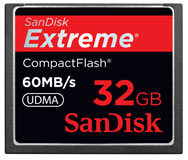
If you’re getting ever-so-slightly fed-up with the range of different memory cards that camera manufacturers insist on supporting, and not being able to record lots of frames of continuous shooting in RAW, as well as thinking that your HD-movie-recording capacity is a bit measly, then the end might just be in sight. Maybe. Perhaps.
SanDisk, Sony, and Nikon have put together their heads and drawn up a proposal to standardise memory card formats. They’ve put their idea to the Compact Flash Association. (What a great name. I keep imagining pint-sized superheroes running it.)
The idea is to create a new specification of memory cards that’ll meet the ever-increasing demands of photographers. You should be able to transfer upto 500MB of data per second (a bit of an improvement on the current 167MB maximum) and your memory card might be able to hold 2TB of data.
Sounds okay to me!
A camera that sees around corners
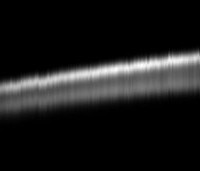
It’s super-early days, but the super-clever people at MIT have developed a camera that can see around corners. And when I say super-early days, I really do mean it. At the moment, the prototype camera is the size of a room and relies on a femtosecond laser. It’s not exactly technology that Canon or Nikon will be making available next year!
The camera works by firing a beam from a laser that bounces around the scene, and some of the light particles will eventually make their way back to the camera’s sensor, where they will be pieced back together to make an image. It’s a process that needs to be repeated at least 12 times to form a complete, if at the moment somewhat fuzzy, image. In order to protect the sensor from the ultra-strong intensity of the laser, the shutter won’t open immediately, either.
Professor Ramesh Raskar is heading the team that has developed the camera. They’re envisaging it being used to assist in search-and-rescue missions, and with robot vision, although they are working towards an endoscope right now. And there’s a way to go yet as the camera still gets confused by complex scenes and only works in the lab. But still. Wow!
(Headsup to the BBC.)
Always keep your eye on the ball

Sports photography isn’t all glamour: there’s getting frozen on a football pitch in February, withered at Wimbledon, and soaked at Sandown. Then there’s getting hit by a ball struck by Tiger Woods. It’s what happened to Mail on Sunday photographer Mark Pain yesterday.
Woods mis-struck his ball in the rough and it careened straight towards Pain and his Nikon D3S. Pain held his nerve and snapped his shot before the ball thumped into his camera, bounced off his chest, and dropped at his feet. Then he made a swift exit.
It might’ve been down to Woods’ play, but I’m not sure I would’ve hung around, either!
Thank you to Bits and Pieces for the headsup, and head to the Mail online for more.
The photo is obviously Mark Pain’s. I’m not that much of a golf buff, really. And I don’t read the Mail.
Lensbaby gets adaptive

You might think that we’d planned our 10 titillating tilt-shifts to co-incide with Lensbaby’s most recent announcement, but I can promise you that we didn’t. It’s just a happy coincidence that if you’re so inspired to have a go at tilt-shift photography with your Micro Four Thirds camera or your Sony α NEX camera, you can do so with Lensbaby’s Tilt Transformer and Composer.
The Tilt Transformer will allow you to attach any Nikon mount lens onto your Micro Four Thirds or Sony α NEX camera. Whether you want to have a go with a prime, a macro, or a fisheye lens, the Tilt Transformer will be your friend.
If you don’t happen to have a box of Nikon glass lying around ready to attach to the adapter, you can attach the Composer to the Tilt Transformer and play around producing tilt-shift pictures until your heart is content.
The Tilt Transformer is available for $250 from Lensbaby or Amazon US, whilst the Composer and Tilt Transformer together costs $350, also from Lensbaby or Amazon US.
Fisheye: speciality or everyday lens?

Every photographer has a favourite lens. Maybe it’s an 18-200mm zoom or a 50mm prime. Maybe it’s a wide angle zoom. Heck, maybe it’s your kit lens. But it’s a lens that you count on day in and day out. It’s an everyday lens that you take with you every time you pack your camera bag and walk out the door. It’s a lens that you know you can rely on in most situations you’ll encounter. And in most cases, it’s a standard type of lens. Nothing too crazy.
So why, then, is my Nikon 10.5mm fisheye lens one of the three that I carry in my bag every day?
When I first got into photography, I spent countless hours debating about what lenses I would spend my money on. Of course, I needed a standard zoom to cover the basics, but what else? I perused countless portfolios and tried to guess what lenses were used on my favorite photographs. I always caught myself stopping at photos taken with a fisheye lens. There was just something so powerful about those fisheye photos. The 180 degree angle, the distortion, the amount of information within a scene that was shown. It was love at first sight. Soon enough, I dropped the cash and picked up my first and only fisheye lens.
At first, it was just… fun. I took the cliché fisheye pictures of my friends and their dogs’ noses. But once I started figuring out what kinds of photography I enjoyed shooting the most, I found myself using the lens more and more. A calm and surreal view of the ocean in Florida. Fisheye. A long exposure of an Atlanta skyline at night. Fisheye. A motion-blurred black and white shot of a subway train as it passed through the station. Fisheye.
I became obsessed with this lens and it eventually got itself promoted from a box on a shelf to my camera bag. It’s now one of my two favorite lenses (the other being my 50mm f/1.4) and my portfolio wouldn’t be the same without it.
Unfortunately, the fisheye lens has gained a reputation for being a gimmicky, kooky, just-for-fun lens. I think it deserves more credit than that. I can’t count how many photos I’ve been able to take with that lens that I could have taken otherwise. And they aren’t just-for-fun photographs either. They can distort architecture to give an amazing perspective; they can give landscapes some feeling of other-worldliness.
Granted, you may not want all of your photos to be taken with a fisheye lens, but I highly recommend adding one to your repertoire. If you do any sort of landscape, cityscape, or architectural photography at all, I’m confident that you’ll enjoy seeing things differently through a fish’s eye. And if you need a touch of inspiration to get you started, why not take a look here?
When is a camera a professional camera?

I’ve just come home from a great weekend of music, poetry, and theatre at the Latitude music festival. There were heaps of cameras floating around Henham Park, from 8 year olds with disposable ones that you can buy in Boots for a few pounds to Nikon D3Ss toted by the press, via mobile phones and all shades of compact camera. But if you were an ordinary paying member of the public, you weren’t allowed to bring in a dSLR.
You see the powers-that-be at Festival Republic—organisers of Latitude and several other big name festivals—had deemed dSLRs as ‘professional’, and that makes them forbidden. If you want the exact text from the website, it’s this: ‘Cameras are normally permitted for personal use. Cameras with detachable telephoto lenses will not be allowed through the three arena entrances. Professional cameras and video/audio equipment are strictly prohibited. Live video/audio recordings made without the permission of the artiste/promoter are prohibited.’
It got me thinking: what exactly is Festival Republic’s logic here?
It seems as if Festival Republic want to protect their professional interests by preventing the commercial sale of images from the festival. In order to do that, they’ve felt that they’ve had to draw a line in the sand regarding what constitutes ‘professional’ equipment. Their distinction is a dSLR camera. I can understand that, to a certain degree: their security personnel can’t be expected to know a zoom from a prime lens or a Canon 1D from a Nikon D3000, so it’s easiest to say dSLRs aren’t allowed. But in many respects, they are doing themselves a huge disservice.
For a start, have they checked out the zoom capabilities on a high-end compact camera? Or even on a lower-end camera, for that matter. Yeah, they have pretty impressive specs.
Have they considered that using a dSLR is going to cause less disturbance to performers than common-or-garden variety cameras because the flash doesn’t need to fire to produce an image in low-light settings?
Plenty of compact cameras are able to shoot videos. In fact, I saw a good number of people doing that over the weekend, despite it being prohibited.
There are plenty of people out there using dSLR cameras because that’s what they prefer to use. They’re not professional and they don’t even hope to become professional. Their cameras are for personal use. Find a better distinction; realise that a dSLR camera doesn’t make someone a professional, and a professional doesn’t always use a dSLR.
I wonder what would happen if someone tried to use a manual SLR?
The case for Pentax
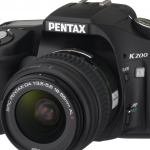
When I recently posted my guide to choosing your first dSLR, I was ripped to shreds in the comments for overlooking Olympus and Pentax… Which is quite wrong of me: Pentax have long made some pretty awesome cameras, with features that Canon and Nikon haven’t had (like being able to remote control external strobes – a feature Canon has never had until the introduction of the Canon 7D!)
Someone who was particularly outraged is the most fabulous John Cavan, who wrote a passionate and well-articulated plea to stop ignoring Pentax – and he’s got a pretty damn good case, actually… here’s why:
Canon, Nikon. Nikon, Canon. When most people think of buying a dSLR, that is often the debate that they wage with themselves. Of course, with the Sony purchase of Minolta, they may even now start to think of Sony in that debate. There is, however, another player on the market, a player that has been around for a very long time. In fact, they were once synonymous with SLR photography: Pentax.
Pentax is the first Japanese company to release a 35mm SLR in 1952 and, for quite a while, were the defacto standard for 35mm photography. The M42 screw mount, while not a Pentax invention, was made so prevalent by Pentax that it became known as the Pentax mount. In a sense, Pentax ushered in the age of SLR photography producing more cameras than all other manufacturers combined. So, what happened to them? They didn’t fall off the 35mm radar, even as they lost ground to names like Nikon and Canon, Pentax continued to innovate, but they were the last to move from the limited capability of the M42 mount and, to some degree, that probably hurt them the most.
However, Pentax didn’t go away. They continued to produce excellent cameras, including the classic K1000, first created in 1976 as a basic SLR, it managed to outlive all of its brethren and almost all successors because of its elegance and simplicity, finally hitting end of life in 1997. In 2003, Pentax entered the digital age and didn’t stop their innovation. By this time, however, the Canon/Nikon duopoly was pretty complete. A tough nut to crack, no?
Pentax is trying to crack that nut, so I’m going to talk about Pentax as it started getting serious about dSLR photography with the arrival of the K100D, K110D, and the K10D. The first two were the entry level dSLRs and the last was aimed at the prosumer. As with all of their cameras, Pentax focussed on certain key areas: backwards compatibility and the photographic experience. These are factors that continue to be key to Pentax since the introduction of these cameras, so let’s talk about them.
Backwards compatibility is a funny statement with digital, but it is applicable because it means that over 50 years of high grade optics are still available to you. Many of us Pentaxians have in our kits lenses that the modern dSLR owner wouldn’t even think of, wouldn’t even be aware of. We don’t have these lenses because there aren’t modern options for Pentax, because we have those too, but because they present optical quality as good as any current lens and at a price that you can’t hope to beat brand new. To give you an example, I own a Vivitar Series 1 100mm f/2.8 Macro manufactured by Kiron. This lens is widely regarded as one of the best, if not the best, macro lens ever produced and it’s nearly 40 years old. I paid $160 (Canadian) for it. To compare, a Canon EF 100mm f/2.8 Macro lens currently retails for $730 or $1249 with image stabilization.
Another backwards compatibility feature, which makes my last comment even more interesting, is Pentax image stabilization (or anti-shake) is in the body of the camera. There are certainly advantages to IS on the lens, such as IS in the viewfinder, but the single biggest advantage to it on the body is that every single lens I attach to my Pentax, regardless of age, can be stabilized. Of the major dSLR manufacturers, only Sony can say that, and they don’t have the lens history of Pentax. There’s another advantage: price. You can see that above, IS adds $500 to the price for what is otherwise the same lens.
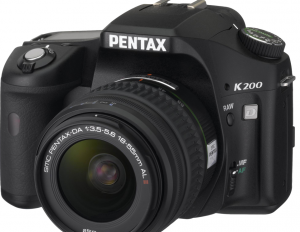
For your first step into the world of digital photography, look beyond the two big brands for some creative features and competitive pricing!
Now, of course, Pentax isn’t just leaving us in the world of historical lenses, scouring eBay and Craigslist so that we can take pictures. They do have a very good line-up of modern lenses with zooms and primes, wide to telephoto including what many, such as DP Review, call highly desirable limited lenses. It isn’t just Pentax, we also have Sigma, Tamron, and others producing good optics for a good price. So, with Pentax, you can pull from the old (even ancient, M42 can be adapted to the modern bayonet mount) and the new. Heck, with an adapter, you can even put a monstrous medium format lens on it! I know a local photographer that uses his Pentax 67 lenses on his K20D all the time.
Alright, I think I’ve established that Pentax is good at keeping the old available to the new, but I also mentioned the photographic experience. Most modern dSRLs offer what I would call point-and-shoot features and, to some degree, that is a wise choice. Pentax took a different approach, aiming their line at people looking to have the pleasure of the 35mm film experience in a digital package. So, instead of scene modes on the dial, they added things like hyper-program (a way to quickly switch between aperture and shutter priority modes), sensitivity priority (control ISO with the rear dial), and shutter/aperture priority (camera sets ISO based on shutter and aperture). Other ideas, such as the “green” button near the shutter release that quickly resets the exposure, even in manual, giving you a good starting point for creative adjustment. They also have the RAW+jpeg button that will easily give you both formats for the next shot, a feature that just made it to Canon now.
So, where is Pentax today? Well, they have a line up modern dSLRs that have continuously received top reviews time and again. In the entry market, we have the K200D, K-m and the K-x cameras. The K-x is the newest and is something worth talking about, so much so that Photography blog gave it a rare “essential” rating. At the higher end, we have the K20D and the K7, both very highly regarded. The K7 was recently compared to the latest Canon prosumer (the 7D) on DP Review and came out very close, but also costs quite a bit less. I’m not going to go into detailed features for them, this is widely covered on the Internet, but I will note that the prosumer versions of the Pentax line offer a number of features that are usually only seen in substantially more expensive cameras. Where Pentax lacks is at the truly pro end of the spectrum, something they hope to rectify with a medium format digital in the new year. Mind you, that’s probably more than most of us would wish to handle if we’re not doing commercial photography.
In any case, I’m not writing to convince you to buy Pentax (it means more great lenses for me on Craigslist if you don’t), but to consider it. Canon, Nikon, and Sony all produce excellent cameras as well. I don’t think you, as the consumer, are going to be left feeling cheated with any of them. My only advice would be to get your hands on to the cameras and try them, all of them. The feel, the weight, and the placement of the controls are all going to be factors that should influence you as much as anything and that you can only get by putting it into your hands with a decent lens. If you do that, in a good photography store that lets you, then I think you’ll find that Pentax is as good as any of them and perhaps, now, the debate you wage won’t just be Canon, Nikon or Nikon, Canon.
About John
John is a software architect that just happens to be an avid amateur photographer. He did a lot of 35mm film (used Yashica and Pentax) in college as the editor of the newspaper, but then kind of let it slide for years after that because he could never be bothered to develop the film. Ultimately, he got back into photography with the Pentax K10D and then it just went from there. Check out his website, too!
Do you enjoy a smattering of random photography links? Well, squire, I welcome thee to join me on Twitter - Follow @Photocritic
© Kamps Consulting Ltd. This article is licenced for use on Pixiq only. Please do not reproduce wholly or in part without a license. More info.
Picking an SLR camera

Back in April, I did a Top 15 entry-level camera round-up, and it’s one of those posts where the comments stayed relatively calm, but I got tonnes of e-mail afterwards, with suggestions, comments etc. I was surprised at the level of passion people had about that one single article, but it got me thinking: I love trying to come up with interesting ways of doing photography, but what if people really want some buying advice? I discovered long ago that this particular blog isn’t really the place, but still… I figured I could do better than a top 15…
So I decided to launch a new website to help you out.
Every week, I get a huge stack of e-mails from readers (well, I get lots of e-mails, I don’t actually print them out and put them in a stack, that’d be ludicrous) who want some help finding a Digital SLR camera. Every time, I have to send them away again, because, well, I’ll be honest with you: While I love, and know a fair bit about photography, my knowledge of actual cameras is limited.
Sure, I’ve used most of the DSLR cameras Canon have launched over the years, and I’ve probably given Canon more than their fair share of my money in the past decade, too, but the truth of the matter is that I’m reluctant to give people advice. I don’t want to re-spark the age-old Canon-Versus-Nikon debate every time I do so either, because frankly, cameras are so good nowadays, that it’s unlikely to be the camera that’ll be the bottleneck in your creative process – it’s the photographer.
On the other hand, I hate sending people away – I like to pride myself on being useful and helpful, and it bothered me that I was unable to help. So I decided to come up with a solution.
Some of you may have noticed that a list of D-SLR cameras appeared on the right of this page – well, that was part of a testing phase, which now is finished, and I’m proud to launch Photocritic SLR.
For every dSLR currently on sale, I have:
- Researched it, and written an introduciton
- Gotten a photo of it from the manufacturers
- Found out what it costs, roughly
- Found some of the best reviews of each camera out there
As I said, I willingly admit that I can’t give particularly thorough advice, but there are dozens of websites out there that can. As such, the Photocritic SLR site gives you a chance to get a rough overview of the market, and delve into the details in all the reviews that are out there.
Best of all, if you, in your journeys, come across a brilliant review that I’ve somehow missed, you can add the review to the right camera yourself! Fabulous.
So go on, if you’re in the market for a camera, check out Photocritic SLR. Let me know what you think in the comments!
Do you enjoy a smattering of random photography links? Well, squire, I welcome thee to join me on Twitter - Follow @Photocritic
© Kamps Consulting Ltd. This article is licenced for use on Pixiq only. Please do not reproduce wholly or in part without a license. More info.










